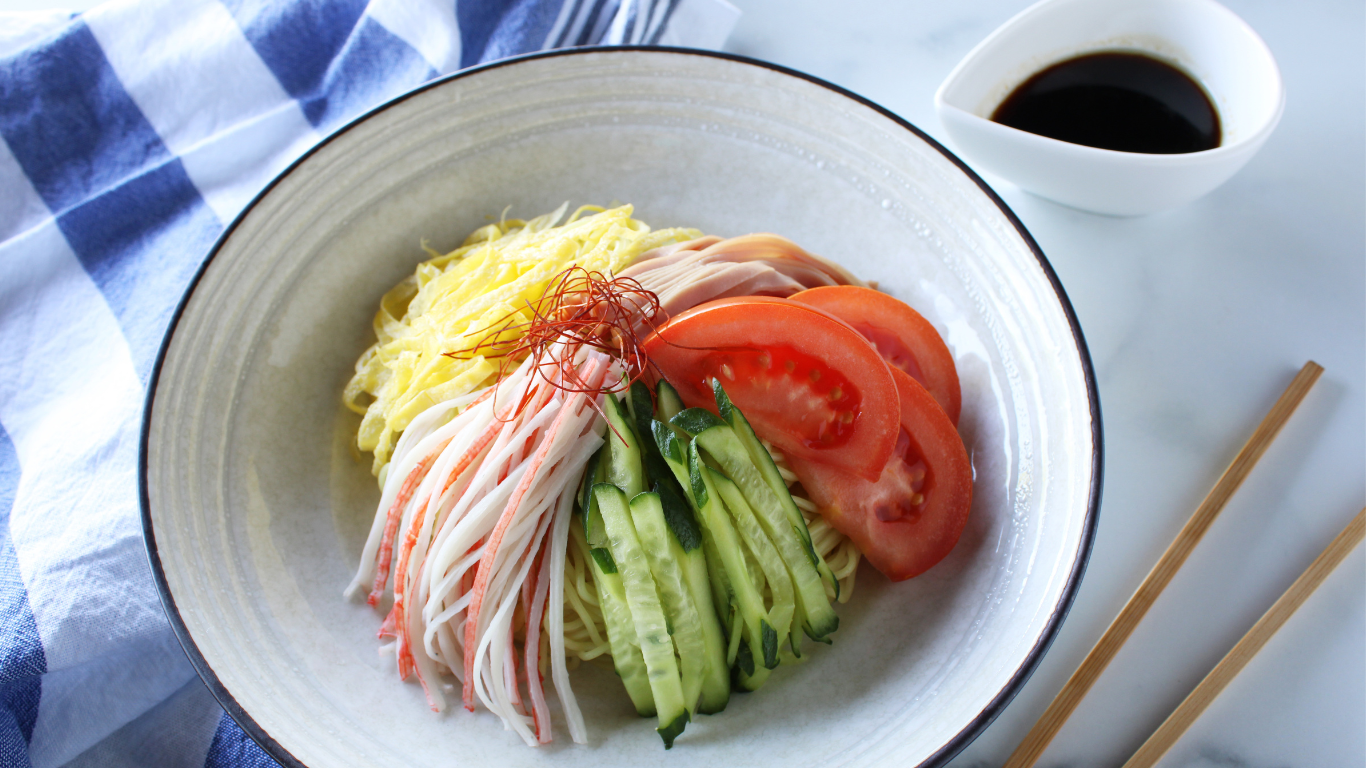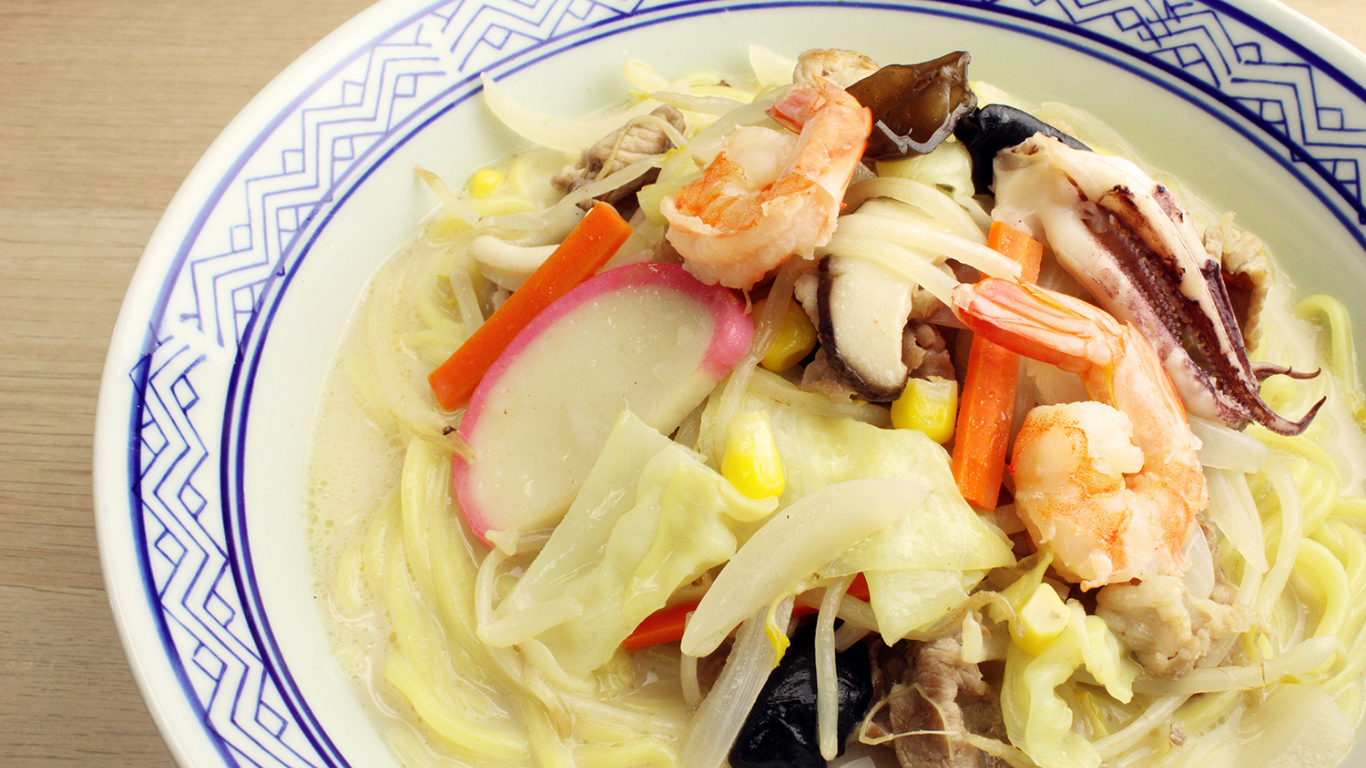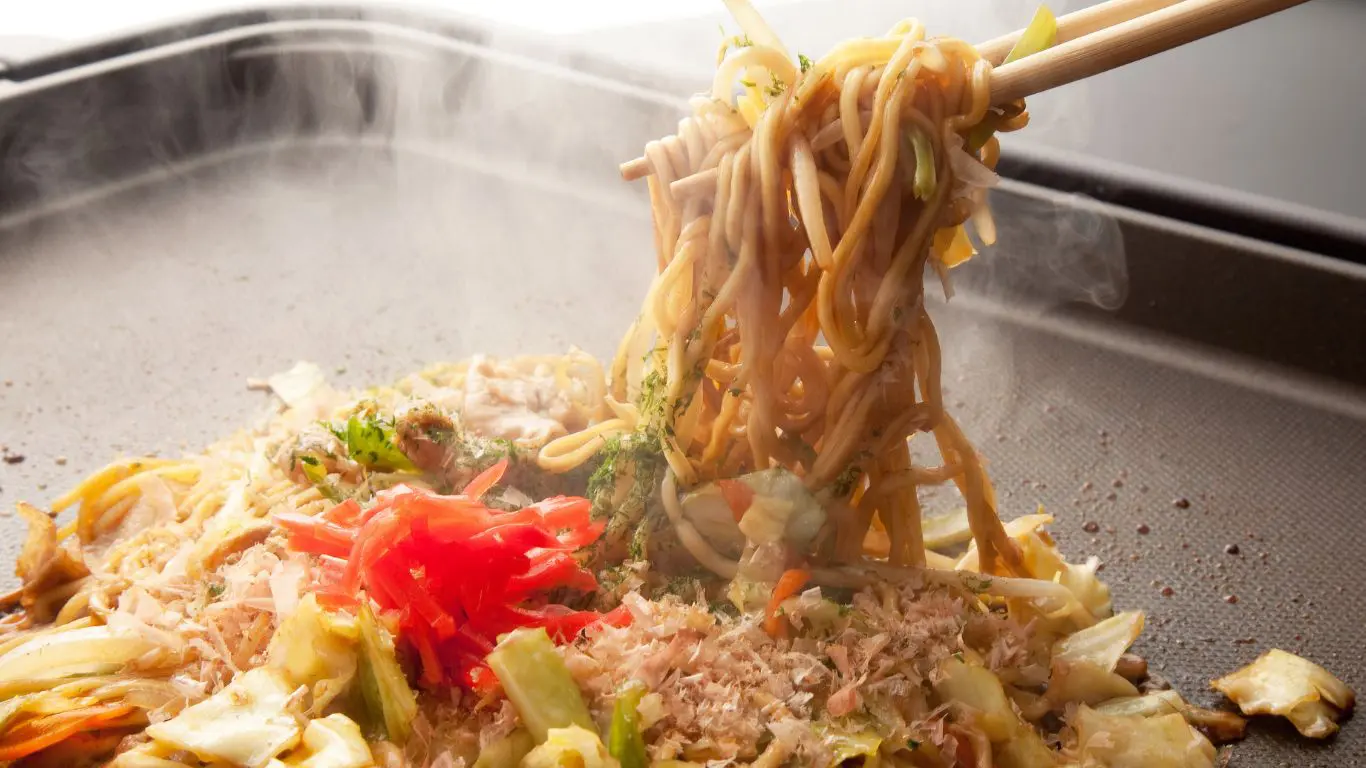Master the Art of Wavy Noodles: Perfect Pairings with Delicious Soups! We did the research, so you don’t have to!
Published: Oct 18, 2023/ Last Updated:Oct 20, 2023
- 10 min read
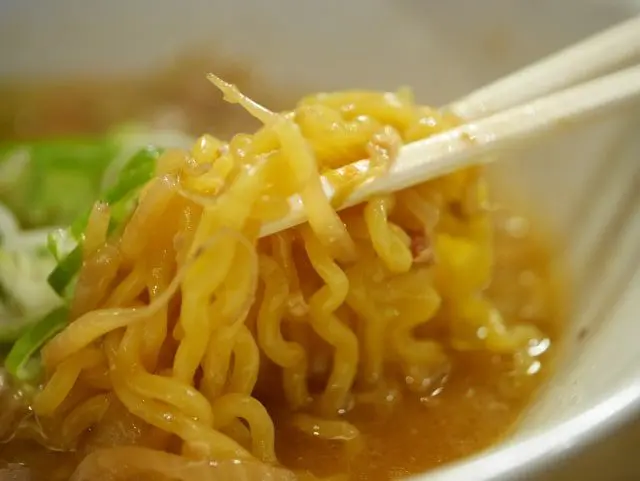
Hey ramen lovers nationwide! We know you’re all living the ramen dream, constantly on the hunt for that unforgettable bowl. Can you recall the last mind-blowing ramen experience? Was it the rich tonkotsu or the savory soy sauce that left you in awe? But wait, what about the noodles – were they wavy or straight?
If you’re drawing a blank, don’t worry! We’re about to unlock the secrets of ramen noodle shapes and why they matter. If you’re a true ramen aficionado, you know that the noodle shape can make or break your bowl. Ever wondered which noodle shape pairs perfectly with your favorite soup? Stick around because today, we’re diving deep into the world of ramen, focusing on the fascinating ‘wavy noodle.’ Join us on this flavorful journey!
- Index
- What kind of soup goes well with wavy noodles?
- How do I make the noodles wavy?
- Regional ramen varieties featuring wavy noodles
- Conclusion
■What kind of soup goes well with wavy noodles?
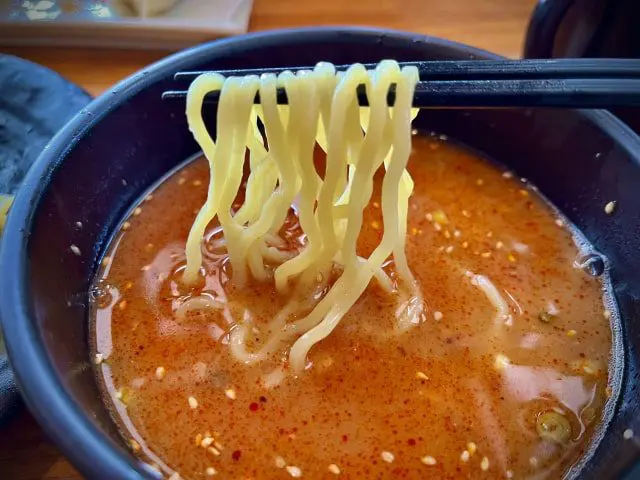
With ramen, there’s more to noodles than meets the eye. You might think of thickness as the primary noodle characteristic, with Jiro-kei ramen’s hearty 2.5 mm noodles on one end of the spectrum and Hakata ramen’s delicate 1 mm noodles on the other. It’s clear that ramen lovers have their preferences in this regard.
But here’s where it gets interesting – beyond thickness, there’s a whole world of noodle shape variations to explore, from the straightforward “straight” to the intriguing “wavy.” (And believe us, when you start considering the types of wheat and extra ingredients like eggs, the noodle possibilities are endless. However, we’ll save that adventure for another day, as it’s quite the noodle odyssey.)
When it comes to choosing between straight and wavy noodles for your ramen, one crucial consideration takes center stage: the dynamic interaction between noodles and soup. It’s a pivotal factor that can make or break your ramen experience.
Many folks assume that wavy noodles, with their shape, would naturally immerse themselves in the soup, but guess what? Experiments have shown a twist in the tale – straight noodles are the real soup MVP! The secret lies in the gaps between the noodles when you pick them up with your chopsticks. Straight noodles snugly fit together, leaving minimal gaps, which allows them to pick up more broth like a capillary action sponge. In contrast, wavy noodles, with their playful twists and turns, leave plenty of gaps, making them less efficient at soaking up the soup’s flavorful essence.
But that’s not all – the noodle’s thickness also plays a starring role. Thin noodles, like the ones found in Hakata ramen, have a knack for embracing the broth, making them the ideal companions for savoring the rich tonkotsu broth. That’s why it’s all about finding that perfect noodle-soup harmony!
Now, let’s dive into the tantalizing world of soup pairings for our wavy noodle heroes. Wavy noodles shine their brightest when accompanied by soups with bold, robust flavors. Here’s the scoop: they don’t dive headfirst into the soup as much as their straight counterparts. Imagine this scenario – a hearty, thick soup brimming with intense flavors. If you were to pair it with delicate, thin, straight noodles, you might find that the soup’s powerful personality overtakes the noodles, creating a rather overpowering taste experience. And that’s where the charm of wavy noodles comes into play. Their playful waves hold their own, allowing the soup’s richness to shine without overshadowing the noodle’s unique texture. It’s no wonder that wavy noodles are often the stars of ramen varieties like miso ramen, where the broth is as bold as it gets.
Now, let’s take a little detour into the fascinating realm of the “Flour-Water Ratio” of noodles – it’s a topic worth noodling over. This ratio refers to the amount of water compared to flour when crafting noodle dough, with the total weight of the flour being 100%. In the world of ramen, the golden ratio is typically around 35%. Noodles using more water than this are dubbed takasuimen (多加水麺) or high-water content noodles, while those using less water are known as teikasuimen (低加水麺) or low-water content noodles. Why does this matter, you ask? Well, it has everything to do with how well noodles embrace their soup. You see, teikasuimen noodles have a knack for readily absorbing and entangling themselves in the soup. Take, for example, Hakata ramen, where teikasuimen noodles are the stars – the soup and noodles become inseparable, intertwining seamlessly.
On the flip side, wavy noodles typically go hand in hand with takasuimen noodles, mainly because the delicate nature of teikasuimen noodles tends to break during the noodle curling process that we’ll delve into shortly. This means that wavy noodles might not cozy up to the broth as much as their straight counterparts. Therefore, when you’re opting for ramen with wavy noodles, you’ll want to pair them with a robust broth that’s ready to make a flavor impact, even when the noodles decide to keep a little distance.
Now, don’t be quick to dismiss wavy noodles when it comes to lighter broths – they have their own unique charm. While it’s true that takasuimen noodles might not cozy up to soups as eagerly as teikasuimen noodles, they bring something special to the table. Takasuimen noodles have a smooth and chewy texture, creating a delightful contrast when paired with a light-flavored soup. Think of it as a harmonious interplay of flavors and textures, where the wavy shape of the noodles adds an extra layer of excitement to each bite. Just to give you a little perspective, the Flour-Water Ratio in typical handmade udon noodles can reach around 50%. If you’ve ever savored udon, you’ll understand how a higher water content can result in a satisfyingly chewy noodle. Now, imagine that same principle at play with our wavy ramen noodles.
Ultimately, the choice between wavy noodles and broth rests in the capable hands of the ramen chef, who meticulously crafts each bowl. In fact, there have been countless instances where these frizzled noodles have beautifully complemented lighter broths, offering a delightful twist to the ramen experience. It’s a testament to the artistry of ramen-making!
So, in the grand realm of ramen, there isn’t a singular, perfect match for wavy noodles and soup. But fret not, for understanding the quirks of wavy noodles can certainly guide you towards your own ramen nirvana. Picture it as your personal ramen adventure, where you’re the culinary explorer. Armed with the knowledge of noodle shapes and their soup dynamics, you’re equipped to curate your own ideal ramen bowl. Whether it’s a thick, hearty broth or a lighter, nuanced one, you’ll have the wisdom to choose what tickles your taste buds. So, next time you step into a ramen joint with the privilege of noodle selection, why not recall our chat? Armed with insights, you can embark on a noodle-infused journey that’ll make every slurp a memorable one. Cheers to your future ramen escapades!
■How do I make the noodles wavy?
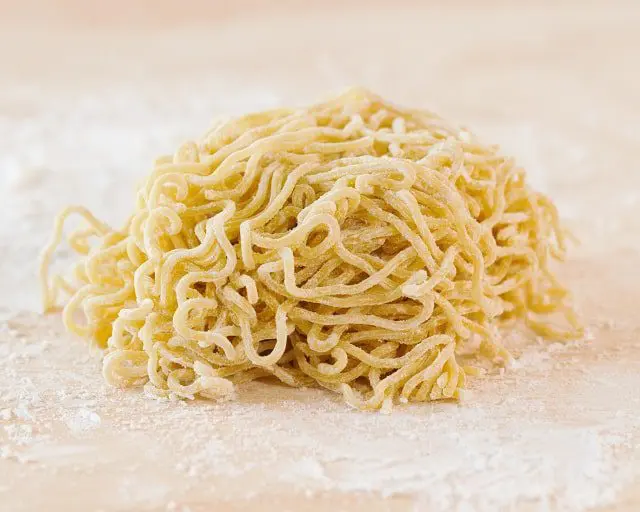
Now, let’s pivot to the fascinating world of making noodles wavy. There are two primary methods in play here: one involves mechanical pressure during the noodle production, and the other is the hand-kneading approach. Interestingly, the journey to crafting wavy noodles begins in much the same way as straight noodles, with the key distinction appearing toward the end when the noodles take their final form.
The mechanical pressure method employs a rubber plate attached to the cutting blade’s exit, deliberately introducing resistance during the cutting process, resulting in the characteristic wave of the noodles. To witness this technique in action, check out the video below around the 9:55 mark, where you can see how the noodle-making machine imparts that appealing curl or wave to the noodles.
The alternative method involves manually kneading the noodles after they have undergone the standard straight noodle production process to form a large noodle ball. To observe the precise kneading technique, please refer to the video below, starting at approximately 3:00, for a visual demonstration.
The key distinction between the two methods lies in the outcome of the noodles’ wave. The mechanical pressure method yields noodles with a consistent wavy pattern, while hand kneading introduces an element of randomness, resulting in a unique texture. The choice of which method to employ depends on the desired compatibility with the soup. It’s worth noting that many Japanese ramen establishments take pride in offering “hand-kneaded noodles,” although this is a labor-intensive process that is a challenge to replicate at home. Consequently, numerous ramen enthusiasts frequent these shops for this specialty.
As a side note, many instant noodles, such as Cup Noodles, also feature wavy noodles, albeit for a different reason. Ando Momofuku, while developing Chicken Ramen, faced the issue of straight noodles clumping together when fried in large batches, hindering uniform frying. His ingenious solution was to curl the noodles, creating space between them and allowing for even frying. This innovation is why many instant ramen noodles still feature wavy shapes today.
■Regional ramen varieties featuring wavy noodles
In our previous articles (HOW MANY DO YOU KNOW? THE PROFOUND WORLD OF REGIONAL RAMEN), we’ve explored the wide variety of regional ramen found throughout Japan, each distinguished by its unique local ingredients and cultural influences. In this article, we’ll highlight some local ramen varieties renowned for their use of “wavy noodles.”
・Sapporo Ramen
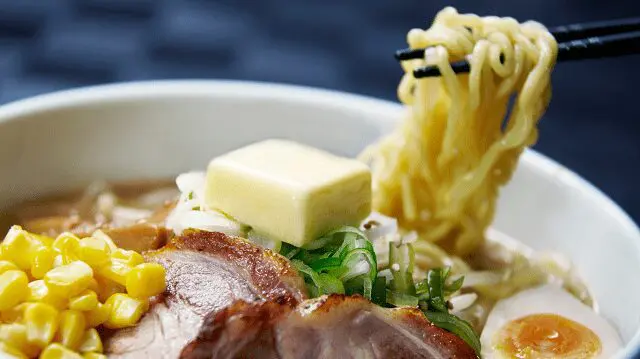
Sapporo ramen is renowned for being Japan’s pioneer in miso ramen, and its distinctive “medium-thick wavy noodles” are a defining feature that captivates many ramen enthusiasts. The use of wavy noodles in Sapporo ramen was driven by a practical consideration – to enhance ease of consumption with chopsticks. Located in the northernmost region of Japan, Hokkaido, where Sapporo resides, is known for its harsh winters. In such an environment, laborers who toiled throughout the day found it challenging to enjoy ramen at night due to weakened hands that struggled to grasp and lift the noodles with chopsticks. Thus, the adoption of wavy noodles was a clever solution to facilitate their consumption.
Sapporo ramen is also distinguished by its unique yellow noodles, which owe their hue to the addition of eggs. This decision stemmed from collaborative discussions between Morito Omiya, the founder of Miso Ramen at the time, and Takayuki Nishiyama, the founder of Nishiyama Seimen (a ramen noodle manufacturer based in Sapporo). Their aim was to make the noodle color more visually appetizing.
・Kitakata Ramen
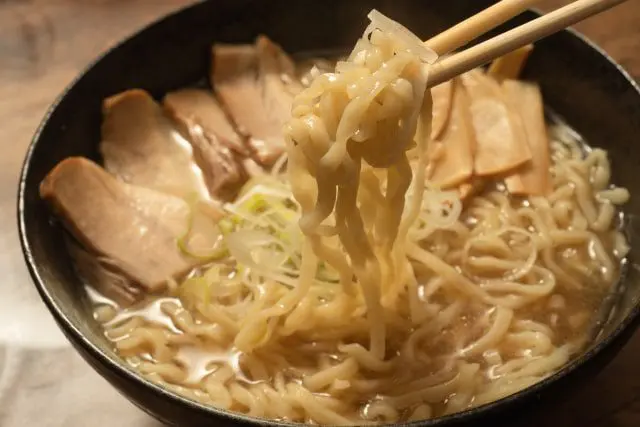
Kitakata ramen, hailing from Kitakata City in Fukushima Prefecture, renowned for its traditional warehouses, holds a special place in Japan’s ramen culture. What sets Kitakata ramen apart are its distinct flattened, wavy noodles, known for their remarkable firmness due to being crafted from high-water content “takasuimen” noodles. The exceptional quality of mountain spring water abundant in this region plays a pivotal role in nurturing the tradition of crafting noodles with a higher water content.
Furthermore, we’ve mentioned that Kitakata City is recognized for its “traditionally built warehouses,” which hints at the thriving soy sauce, miso, and sake brewing industries that require such warehouse facilities. These industries depend on high-quality water and given that Kitakata ramen features a soy sauce-flavored broth, it’s evident that the ramen owes its existence to the abundant natural water resources in the area.
Interestingly, among the three major ramen styles in Japan—commonly recognized as “Hakata Ramen,” “Sapporo Ramen,” and “Kitakata Ramen”—two of them incorporate wavy noodles, adding an intriguing twist to their culinary identities.
・Shirakawa Ramen
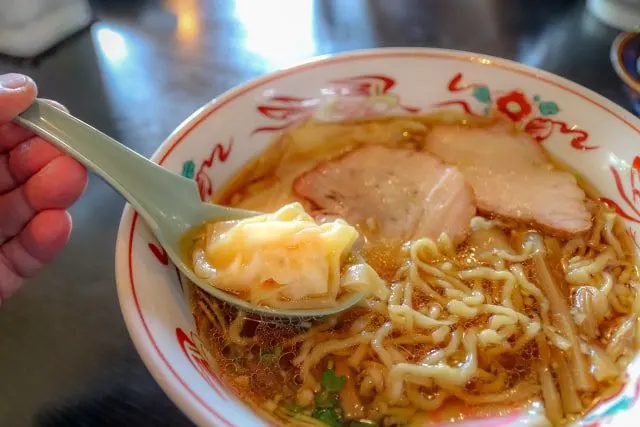
Shirakawa City in Fukushima Prefecture, often considered the gateway to the Tohoku region, has carved its niche as a ramen destination, boasting the delectable Shirakawa Ramen. What sets this ramen apart are the broad, wavy takasuimen noodles, known for their even more pronounced wave compared to the Kitakata ramen we discussed earlier.
The roots of noodle-making expertise in Fukushima trace back to the Edo period (1603-1867), in which at that time the production of resilient soba noodles, resistant to cold weather, was promoted as a safeguard against food shortages. This time-honored soba noodle crafting technique has been ingeniously applied to create the noodles found in Shirakawa Ramen. Specifically, the process involves kneading the noodles with a wooden stick, followed by cutting them with a knife and finally, kneading by hand.
As an additional point of interest, the eatery where Toraji Takei, the founder of Shirakawa Ramen, received his training, served wonton. Consequently, many local establishments offering Shirakawa Ramen also feature wonton noodles on their menus.
・Kushiro Ramen
Lastly, let’s explore Kushiro ramen, which has gained prominence in recent years as one of Hokkaido’s top four ramen varieties, alongside Sapporo ramen, Hakodate ramen, and Asahikawa ramen. In contrast to the miso-flavored Sapporo ramen, salt-infused Hakodate ramen, and soy sauce-rich Asahikawa ramen, Kushiro ramen distinguishes itself primarily through its “wavy noodles.”
However, while the regional ramen varieties we’ve discussed so far often feature relatively thick noodles, Kushiro ramen takes a different approach with its use of thin noodles. One theory suggests that these thin noodles were chosen to reduce cooking time, enabling speedy service to the impatient fishermen involved in the North Pacific fishing industry. Another theory speculates that the choice of thin noodles complements the light bonito-based broth traditionally used in Kushiro ramen.
■Conclusion
In this edition, we’ve investigated various intriguing aspects related to wavy noodles in ramen. What are your thoughts? We hope you now appreciate that even the shape of a single noodle plays a vital role in shaping the ultimate ramen flavor. While there may appear to be certain conventions, like straight noodles for tonkotsu ramen and wavy noodles for miso ramen, these are merely current best practices rooted in regional ramen traditions and guidelines. There’s no need to feel confined by these conventions.
Keeping in mind noodle shape and soup compatibility discussed in today’s article, you can embark on a quest to discover your own ideal ramen combination. Furthermore, the next time you visit a ramen establishment, take a moment to observe the shape of the noodles you select. It’s a testament to the owner’s meticulous selection of noodles that complement the broth. With this newfound perspective, your ramen experience may take on a whole new dimension.
That wraps up today’s article. We’re gearing up for the next artice, featuring a theme that is sure to surprise ramen enthusiasts, so stay tuned!
Reference links:
【プロが解説】ラーメンの「麺」の「種類」を紹介するよ! – YouTube
ストレート麺とちぢれ麺の違いとは|習志野市で製麺所をお探しなら早川製麺
麺とスープのベストな相性!〜醤油・塩・味噌・豚骨編〜 | 1玉45円からの製麺所
ラーメン「麺の種類」の基礎知識。麺の太さ・形状・作り方・使い方を徹底解説 | 全国ご当地ラーメンの歴史
ラーメンで一番スープが絡みやすい麺って何ですか?細麺?太麺?ちぢれ麺?他にもっと絡むってのはありますか? – Quora
即席めん に4つの秘密 | 知識の宝庫!目がテン!ライブラリー
知らなかった?わくわくさせる札幌ラーメンSTORY! – 北海道Likers
札幌ラーメンの麺の特徴とは?ちぢれ麺/卵麺の起源と歴史を紹介! | 株式会社GRAST
【喜多方ラーメン・コツ】麺の手もみ方法、家でも独特の食感を楽しもう! – ラーメン・つけ麺・低糖質麺の通販 製麺所直送【麺くる 公式直営サイト】
喜多方ラーメンとは – 蔵の町喜多方老麺会 –
全国ご当地ラーメン – 喜多方ラーメン – ラーペディア – 新横浜ラーメン博物館
麺の匠 | 喜多方ラーメン 坂内
全国ご当地ラーメン – 白河ラーメン – ラーペディア – 新横浜ラーメン博物館
福島県・ご当地「白河ラーメン」の歴史。ルーツは江戸中期・そば打ち技法 | 全国ご当地ラーメンの歴史
細麺のひみつ – 釧路ラーメン麺遊会マップ
How to make wavy ramen noodles. Silicon flaps on the cutter = wavy… | by Joshua Dance | Medium
